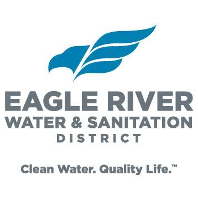Widgetized Section
Go to Admin » Appearance » Widgets » and move Gabfire Widget: Social into that MastheadOverlay zone
Public water providers working to increase understanding of PFAS
The Eagle River Water & Sanitation District on Wednesday issued the following press release on PFAS chemicals in drinking water:
On Jun. 15, the Environmental Protection Agency (EPA) announced new interim lifetime health advisories for four PFAS (Per- and polyfluoroalkyl substances) chemicals in drinking water. A health advisory serves as guidance before the EPA develops a regulation. It is a level, or minimum concentration, at which negative health effects may occur over a lifetime of exposure. The Colorado Department of Public Health and Environment (CDPHE) supports these health advisory changes to PFAS and has asked all public water systems to take action to reduce these pervasive chemicals.

The Eagle River Water & Sanitation District and the Upper Eagle Regional Water Authority are committed to providing safe, reliable, and affordable drinking water to its customers from Vail through Edwards. We want customers to know what actions we are taking to protect public health in light of these changes and new research around PFAS.
What are PFAS?
PFAS are a group of over 5,000 man-made chemicals that have been used in industry and consumer products since the 1940s. They grew in popularity because of their ability to resist oil and water and withstand extreme temperatures. There are thousands of PFAS chemicals in products including ski wax, nonstick cookware, water-repellent clothing, stain-resistant textiles, cosmetics, and firefighting foams. These compounds are widespread and do not break down over time, and therefore can get into our water, soil, air, and food during production and use. Concerns over human health impacts began to surface in the early 2000s, and although manufacturing of some of these compounds have been phased out, their resistance to degradation allows them to persist in the environment and build up in the human body.
What are the health advisory levels for PFAS?
In 2016, the health advisory for two widely used and studied PFAS compounds, Perfluorooctanoic Acid (PFOA) and Perfluorooctane Sulfonate (PFOS), were set at 70 parts per trillion (ppt). A concentration of 1 ppt is equal to one part of a substance for every one trillion parts of water in which it is contained. It is an extremely low amount, and technology currently exists to detect PFAS compounds as low as 2 ppt.
The EPA set the new interim lifetime health advisory levels for PFOA to 0.004 ppt and PFOS to 0.02 ppt. These levels for PFOA and PFOS are so low they are below current detection abilities of analytical equipment. The EPA also issued final lifetime health advisory levels for two other PFAS compounds: Hexafluoropropylene oxide dimer acid (HFPO-DA), known as “GenX,” and Perfluorobutane sulfonic acid (PFBS). The final lifetime health advisory level is 10 ppt for GenX and 2,000 ppt for PFBS.
What are the district and authority doing about PFAS?
Currently, there is no federal regulation for PFAS in drinking water. Research is a priority at a national level, and the new advisories are in place to protect public health until a regulation for these chemicals is developed. The EPA is expected to release a PFAS National Drinking Water Regulation proposal this fall.
In the meantime, CDPHE has created a three-step approach to address PFAS contamination in Colorado that the district and authority have committed to follow. These steps are 1) Assess, 2) Inform, and 3) Reduce.
The district and authority are in the first step of this approach, the assess phase. This step involves collecting samples and monitoring for PFAS. The district and authority voluntarily collected a single set of PFAS samples in 2020. PFOA and PFOS were detected in drinking water at levels that were well below the EPA’s 2016 health advisory levels but above the new 2022 health advisory levels. However, this is a limited sample set and may not be representative of drinking water within our entire system. As a next step, we are performing additional sampling this fall to further characterize PFAS levels with a more comprehensive monitoring program. Upon completion of the assess phase, we will provide a notice to the public that contains PFAS sample results and an explanation of the significance of the sample results.
Stay informed about PFAS
For additional information regarding PFAS in drinking water and health information, visit http://cdphe.colorado.gov/pfas-health orhttp://www.epa.gov/pfas. Contact district customer service with any questions or concerns at 970-477-5451.


